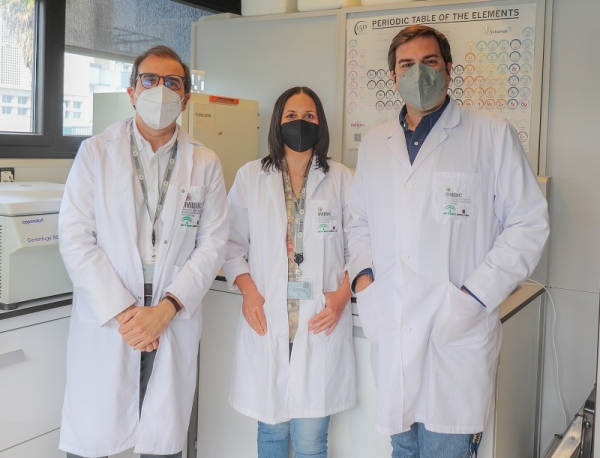An example of these problems is Polycystic Ovary Syndrome (PCOS), one of the most common diseases among young women. One in ten suffers from it, and their fertility may be affected. In light of this, the European Tac1-Ovulation project arose. It is coordinated by the Professor of Physiology at the University of Córdoba Manuel Tena Sempere, together with postdoctoral researcher Silvia León Téllez, who returned to the UCO after a period of extensive training at Brigham and Women's Hospital. This is a basic research project that aims to understand the fundamental mechanisms affecting how our brain controls ovulation, with translational implications.
The project is based on identifying a possible relationship between the substance P, which is part of a family of tachykinins (involved in the regulation of ovulation), with kisspeptin (a well-known molecule for its participation in reproduction) to control ovulation, and then identify which neuronal populations are participating, so as to be able to model the action in order to find possible "therapeutic targets", improving ovulatory problems. For this, animal models were created using mice (previously approved by ethical committees), since their hormonal mechanisms of ovulation control are similar to those of humans.
Manuel Tena Sempere, the project's coordinator at the UCO, emphasized that, although the final objective of the project is not to come up with a drug that induces ovulation, it does aim to improve the reproductive health of the population and provide information about the role of an important substance that may contribute to providing solutions that can be transferred to clinics, thereby improving public health, in general terms, in the reproductive sphere. In this regard the Tac1-Ovulation project encompasses the characterization, shape, circuits and structures of substrates, and describing their function in controlling the ovulation process.
Despite its beginnings, during the onset of the pandemic, it was possible to minimize its impact on project, such as the inability to access the laboratory. The research team adjusted the work structure in response to the new situation, achieving promising results and expectations of meeting the project's objectives. Likewise, thanks to the achievement of this European project, they agree that they should be able to establish a very important line of research related to the physiological control of female reproductive health and functions.
The Tac1-Ovulation - “Addressing the Roles of Tachykinins in the Control of Ovulation: Focus on the Substance-P/Tachykinin Receptor Type 1 (Tac1/Tacr1) System” project (H2020-MSCA-IF-2019-895420) is funded by the European Union through the H2020-MSCA-IF-2019 call.
"This report is part of the project “CONSOLIDA-UCO ECT2020-000810", funded by MCIN/AEI/10.13039/501100011033 and by European Union “NextGenerationEU”/PRTR”.


